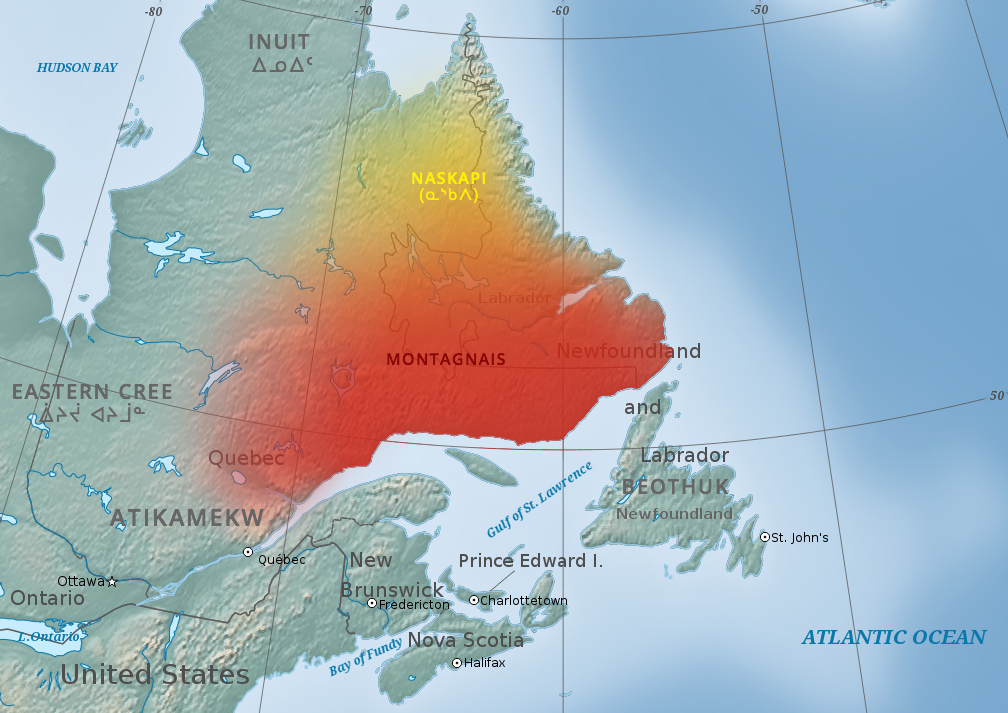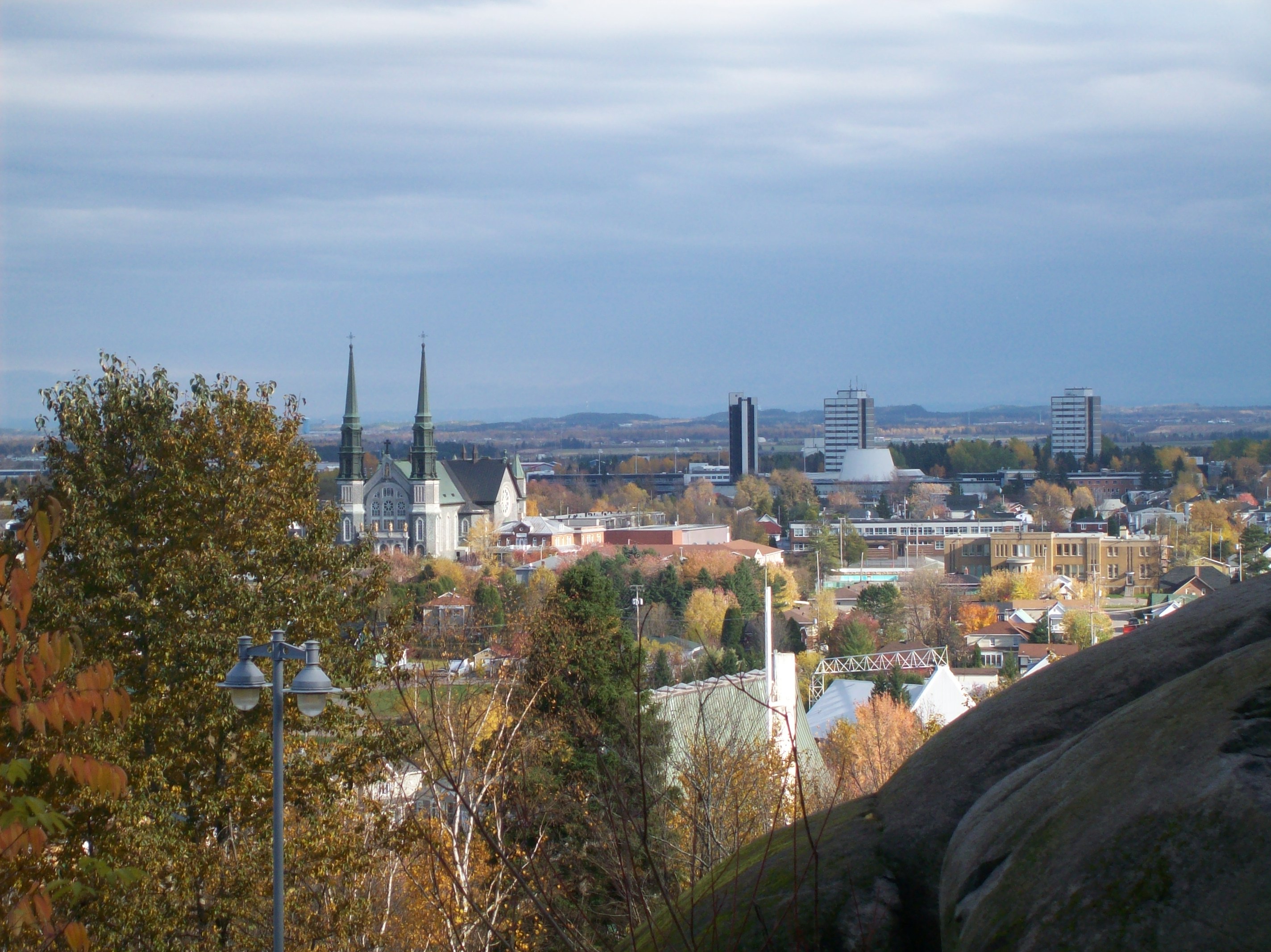|
Brébeuf Lake (Saint-Jean River Tributary)
The Brébeuf Lake is a body of water tributary of the Saint-Jean River (Saguenay River tributary), Saint-Jean River. It is in the local municipality (Quebec), municipality of Rivière-Éternité, Quebec, Rivière-Éternité, Quebec, Canada. The Brébeuf Lake is integrated into the zec du Lac-au-Sable, a controlled exploitation zone. The southwest part of Brébeuf Lake is served by a forest road from the village of Saint-Félix-d'Otis, Quebec, Saint-Félix-d'Otis where it connects to Quebec Route 170, route 170. Few other secondary forest roads serve the lake sector for forestry and recreational tourism activities. Forestry is the main economic activity in the sector; recreational tourism, second. The surface of Brébeuf Lake is usually frozen from the end of November to the beginning of April, however safe circulation on the ice is generally made from mid-December to the end of March. Geography The main watersheds near Brébeuf Lake are: * north side: Bailoquet Lake, Éterni ... [...More Info...] [...Related Items...] OR: [Wikipedia] [Google] [Baidu] |
Rivière-Éternité, Quebec
Rivière-Éternité is a municipality (Quebec), municipality, being part of Le Fjord-du-Saguenay Regional County Municipality, located in the administrative region of Saguenay–Lac-Saint-Jean, in Quebec, Canada. Geography Rivière-Éternité is a small village in Quebec set in the valley of the Éternité River. It is crossed by Quebec Route 170, route 170. Toponymy The Commission de toponymie du Québec writes about it: “The name of this municipality of Saguenay, officially created in 1974, was borrowed from the river that flows there. However, the reason for the designation of this tributary of the Saguenay River, collected between Cape Éternité and Cape Trinité, is unknown. Without doubt, the proximity of Cape Eternity, which evokes the beyond, played a role in the choice of this name which alludes to the absence of beginning and end of the existence of God. Before making us think of the beyond, the term evokes a very long duration. " She continues: “The lands ... [...More Info...] [...Related Items...] OR: [Wikipedia] [Google] [Baidu] |
Cami River
The Cami river is a tributary of the Saint-Jean River, flowing in the municipality of Lalemant, Hébertville-Station and Rivière-Éternité, in the Fjord-du-Saguenay, in the administrative region of Saguenay-Lac-Saint-Jean, in the province of Quebec, in Canada. The course of the Cami river crosses the zec du Lac-au-Sable. The Cami river valley is served along its entire length by the Lac-Desprez road, for forestry and recreational tourism activities. Some secondary forest roads serve this valley. Forestry is the main economic activity in the sector; recreational tourism, second. The surface of the Cami River is usually frozen from the beginning of December to the end of March, however the safe circulation on the ice is generally made from mid-December to mid-March. Geography The main watersheds neighboring the Cami River are: * north side: Bailloquet Lake, Otis Lake, Périgny Lake, Éternité River, Lac à la Truite, Saguenay River; * east side: Saint-Jean river, Quar ... [...More Info...] [...Related Items...] OR: [Wikipedia] [Google] [Baidu] |
Quebec City
Quebec City ( or ; french: Ville de Québec), officially Québec (), is the capital city of the Provinces and territories of Canada, Canadian province of Quebec. As of July 2021, the city had a population of 549,459, and the Communauté métropolitaine de Québec, metropolitan area had a population of 839,311. It is the eleventhList of the largest municipalities in Canada by population, -largest city and the seventhList of census metropolitan areas and agglomerations in Canada, -largest metropolitan area in Canada. It is also the List of towns in Quebec, second-largest city in the province after Montreal. It has a humid continental climate with warm summers coupled with cold and snowy winters. The Algonquian people had originally named the area , an Algonquin language, AlgonquinThe Algonquin language is a distinct language of the Algonquian languages, Algonquian language family, and is not a misspelling. word meaning "where the river narrows", because the Saint Lawrence River na ... [...More Info...] [...Related Items...] OR: [Wikipedia] [Google] [Baidu] |
Innu
The Innu / Ilnu ("man", "person") or Innut / Innuat / Ilnuatsh ("people"), formerly called Montagnais from the French colonial period ( French for "mountain people", English pronunciation: ), are the Indigenous inhabitants of territory in the northeastern portion of the present-day province of Labrador and some portions of Quebec. They refer to their traditional homeland as ''Nitassinan'' ("Our Land", ᓂᑕᔅᓯᓇᓐ) or ''Innu-assi'' ("Innu Land"). The Innu are divided into several bands, with the Montagnais being the southernmost group and the Naskapi being the northernmost. Their ancestors were known to have lived on these lands as hunter-gatherers for several thousand years. To support their seasonal hunting migrations, they created portable tents made of animal skins. Their subsistence activities were historically centred on hunting and trapping caribou, moose, deer, and small game. Their language, Ilnu-Aimun or Innu-Aimun (popularly known since the French colonia ... [...More Info...] [...Related Items...] OR: [Wikipedia] [Google] [Baidu] |
New France
New France (french: Nouvelle-France) was the area colonized by France in North America, beginning with the exploration of the Gulf of Saint Lawrence by Jacques Cartier in 1534 and ending with the cession of New France to Great Britain and Spain in 1763 under the Treaty of Paris. The vast territory of ''New France'' consisted of five colonies at its peak in 1712, each with its own administration: Canada, the most developed colony, was divided into the districts of Québec, Trois-Rivières, and Montréal; Hudson Bay; Acadie in the northeast; Plaisance on the island of Newfoundland; and Louisiane. It extended from Newfoundland to the Canadian Prairies and from Hudson Bay to the Gulf of Mexico, including all the Great Lakes of North America. In the 16th century, the lands were used primarily to draw from the wealth of natural resources such as furs through trade with the various indigenous peoples. In the seventeenth century, successful settlements began in Acadia and in Quebe ... [...More Info...] [...Related Items...] OR: [Wikipedia] [Google] [Baidu] |
Jean De Brébeuf
Jean de Brébeuf () (25 March 1593 16 March 1649) was a French Jesuit missionary who travelled to New France (Canada) in 1625. There he worked primarily with the Huron (Wyandot people) for the rest of his life, except for a few years in France from 1629 to 1633. He learned their language and culture, writing extensively about each to aid other missionaries. In 1649, Brébeuf and another missionary were captured when an Iroquois raid took over a Huron village (referred to in French as St. Louis). Together with Huron captives, the missionaries were ritually tortured and killed on 16 March 1649. Brébeuf was beatified in 1925 and among eight Jesuit missionaries canonized as saints in the Catholic Church in 1930. Biography Early years Brébeuf was born 25 March 1593 in Condé-sur-Vire, Normandy, France. (He was the uncle of poet Georges de Brébeuf). He joined the Society of Jesus in 1617 at the age of 24, spending the next two years under the direction of Lancelot Marin. Between ... [...More Info...] [...Related Items...] OR: [Wikipedia] [Google] [Baidu] |
France
France (), officially the French Republic ( ), is a country primarily located in Western Europe. It also comprises of Overseas France, overseas regions and territories in the Americas and the Atlantic Ocean, Atlantic, Pacific Ocean, Pacific and Indian Oceans. Its Metropolitan France, metropolitan area extends from the Rhine to the Atlantic Ocean and from the Mediterranean Sea to the English Channel and the North Sea; overseas territories include French Guiana in South America, Saint Pierre and Miquelon in the North Atlantic, the French West Indies, and many islands in Oceania and the Indian Ocean. Due to its several coastal territories, France has the largest exclusive economic zone in the world. France borders Belgium, Luxembourg, Germany, Switzerland, Monaco, Italy, Andorra, and Spain in continental Europe, as well as the Kingdom of the Netherlands, Netherlands, Suriname, and Brazil in the Americas via its overseas territories in French Guiana and Saint Martin (island), ... [...More Info...] [...Related Items...] OR: [Wikipedia] [Google] [Baidu] |
Condé-sur-Vire
Condé-sur-Vire (, literally ''Condé on Vire'') is a commune in the Manche department in Normandy in north-western France. On 1 January 2016, the former commune of Le Mesnil-Raoult was merged into Condé-sur-Vire. On 1 January 2017, the former commune of Troisgots was merged into Condé-sur-Vire. 22 July 2016 Geography Climate Condé-sur-Vire has a ( ''Cfb''). The average annual temperature in Condé-sur-Vire is . The average annu ...[...More Info...] [...Related Items...] OR: [Wikipedia] [Google] [Baidu] |
Tadoussac
Tadoussac () is a village in Quebec, Canada, at the confluence of the Saguenay and Saint Lawrence rivers. The indigenous Innu call the place ''Totouskak'' (plural for ''totouswk'' or ''totochak'') meaning "bosom", probably in reference to the two round and sandy hills located on the west side of the village. According to other interpretations, it could also mean "place of lobsters", or "place where the ice is broken" (from the Innu ''shashuko''). Although located in Innu territory, the post was also frequented by the Mi'kmaq people in the second half of the 16th century, who called it ''Gtatosag'' ("among the rocks"). Alternate spellings of Tadoussac over the centuries included Tadousac (17th and 18th centuries), Tadoussak, and Thadoyzeau (1550). Tadoussac was first visited by Europeans in 1535 and was established in 1599 when the first trading post in Canada was formed there, in addition to a permanent settlement being placed in the same area that the Grand Hotel is located tod ... [...More Info...] [...Related Items...] OR: [Wikipedia] [Google] [Baidu] |
Saguenay, Quebec
Saguenay ( , , ) is a city in the Saguenay–Lac-Saint-Jean region of Quebec, Canada, on the Saguenay River, about north of Quebec City by overland route. It is about upriver and northwest of Tadoussac, located at the confluence with the St. Lawrence River. It was formed in 2002 by merging the cities of Chicoutimi and Jonquière and the town of La Baie, Quebec, La Baie. Chicoutimi was founded by French colonists in 1676. The city of Saguenay constitutes a territory equivalent to a regional county municipality (TE); its geographical code is 941. Together with the regional county municipality of Le Fjord-du-Saguenay Regional County Municipality, Le Fjord-du-Saguenay, it forms the Census geographic units of Canada, census division (CD) of Le Saguenay-et-son-Fjord (94). The mayor of Saguenay since 2021 is Julie Dufour. Prior to its use as the name of the city, the term "the Saguenay" or (less commonly) "Saguenay Valley" had already been used for the whole Saguenay River region (se ... [...More Info...] [...Related Items...] OR: [Wikipedia] [Google] [Baidu] |
Lake Ha! Ha!
Lake Ha! Ha! is a waterbody tributary of the Ha! Ha! River. It is located in the municipality of Ferland-et-Boilleau, Quebec, in the Le Fjord-du-Saguenay Regional County Municipality (MRC), in administrative region of Saguenay-Lac-Saint-Jean, in Quebec, located in the Saguenay River valley, in Canada. The southeastern portion of the petit lac Ha! Ha! is served by route 381, which separates the lakes petit lac Ha! Ha! and lake Ha! Ha!. The bridge passes over the waterbody at the peninsula attached to the north shore and then the route goes northwest to serving the northwestern part of the lake Ha! Ha!. The landscape of this lake, surrounded by mountains, attracts nature lovers. Forestry is the main economic activity of the sector; recreational tourism activities, second. The surface of Lake Ha! Ha! is usually frozen from late November to early April; however, safe ice movement is generally from mid-December to late March. Geography The main hydrographic slopes near Lake Ha ... [...More Info...] [...Related Items...] OR: [Wikipedia] [Google] [Baidu] |
Ha! Ha! River (Saguenay River)
The Ha! Ha! River is a watercourse in Saguenay–Lac-Saint-Jean, Quebec, Canada. Its course is entirely located in Saguenay-Lac-Saint-Jean, in the Dubuc provincial constituency and the federal district of Chicoutimi-Le Fjord. The river is shared between the MRC of Le Fjord-du-Saguenay Regional County Municipality (through the town of Ferland-et-Boilleau, Quebec) and the city of Saguenay crossing the La Baie, Quebec borough of Saguenay. The Ha! Ha! River was badly hit during the Saguenay Flood. The southern part of Petit lac Ha! Ha! is served by Route 381 to the bridge that marks out the Petit lac Ha! Ha! and Lake Ha! Ha!. This bridge spans the water level at the peninsula attached to the North Shore, then the road heads northwest, serving the northwestern part of the lake Ha! Ha! and the lower part of the Ha! Ha! River Valley. Forestry is the main economic activity of the sector; recreational tourism activities, second; agriculture is practiced around the lower segment ... [...More Info...] [...Related Items...] OR: [Wikipedia] [Google] [Baidu] |






